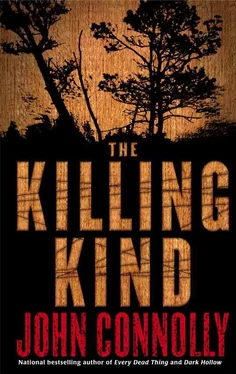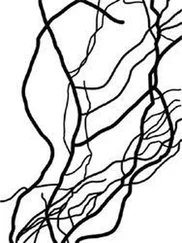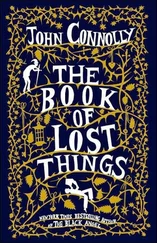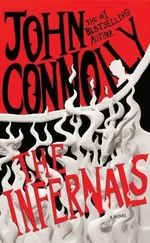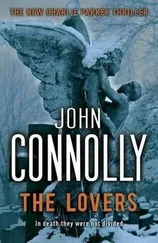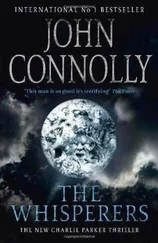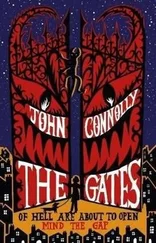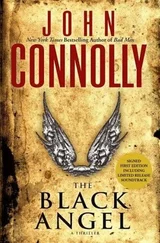I left Chumley's shortly after ten, patting the sleeping dogs one last time for luck as I went. The warm, damp smell of them was still on my hands as I walked beneath the shrouded sky, the noise of the city seeming to rebound back on itself from above. A shadow moved in a doorway to my right, but I paid it no heed and allowed it to move unchallenged behind me.
I passed through the streetlights, and my footsteps echoed hollowly on the ground beneath my feet.
Bone is porous; after years of burial, it will assume the same color as the soil in which it has been interred. The bones by St. Froid Lake were a rich brown, as if the Aroostook Baptists had become one with the natural world around them, an impression reinforced by the small plants that grew between the remains, fed by decay. Rib cages had become trellises for creeping roots, and the concavity of a skull acted as a nursery for small green shoots.
Their clothing had largely rotted away, since most of it had been made from natural fibers and could not survive decades of burial in the manner of synthetic materials. Water stains on the surrounding trees indicated that the land had flooded on occasion, adding extra layers of mud and rotting vegetation, compressing the bones of the dead farther and farther into the soil. The field recovery, the separation of bone from earth, human from animal, child from adult, would be a painstaking process. It would be completed on hands and knees, with aching backs and cold fingers, all supervised by the forensic anthropologist. State police, sheriff's deputies, wardens, even some anthropology students were drafted to assist with the dig. Since the ME's office had only one vehicle, a Dodge van, with which to transport remains, local undertakers and the National Guard were assisting in the removal of the bodies to nearby Presque Isle, from where Bill's Flying Service would take them down to Augusta.
At St. Froid Lake, orange aluminum arrows, the trademark of the deputy chief ME, had been used to create an archaeological square, enclosed and protected by lengths of string. An array of seemingly primitive but ultimately necessary equipment had been brought to bear on the scene: line levels to measure the depth of the remains below the surface; flat-bladed shovels and trowels with which to dig, aware always that the bones could be damaged by a careless movement; handheld screens for sifting small pieces of evidence-a quarter-inch mesh screen first, followed by a standard window screen; tapes; graph paper for drawing a site map depicting the area as seen from above, the position of the remains being added to the map as they were uncovered; plastic bags, bright blue heavy-duty body bags, and waterproof pens; metal detectors to search for guns or other metallic debris; and cameras, to photograph items and artifacts as they were revealed.
As each artifact was uncovered it was photographed, then marked and sealed, an adhesive label attached to the container detailing the case number, the date and time of discovery, a description of the item, its location, and the signature of the investigator who had recovered it. The item was then transported to a secure evidence storage facility, in this case the offices of the ME in Augusta.
Soil samples were taken from the carefully piled earth and bagged. Had the soil by the lake been only slightly more acidic, the remains might simply have vanished and the only sign that they had ever been there would have come from the flourishing plant life above, nourished by flesh and bone. As it was, animal predation, erosion, and scattering had resulted in missing and damaged limbs, but sufficient evidence remained to be examined by the specialists assembled by the ME's office. They included-in addition to the forensic anthropologist, the ME's own permanent staff, and the scientists at the state lab in Augusta-an anatomist, three dental teams to act as forensic odontologists, and the radiologist at the Maine General Medical Center in Augusta. Each would bring to bear his or her own specialist knowledge in a formal identification of the remains.
The remains had been identified as human by an examination of the intact bones, and the sex of the victims would be confirmed by further examinations of the skull, pelvis, femur, sternum, and teeth, where teeth could be found. Age estimates of those victims under the age of twenty-five, accurate to within one year or so, would be made from teeth, where teeth remained, and from the appearance and fusion of the ossification centers and epiphyses, the end parts of the long bones, which grow separately from the shaft in early life. In the case of older bones, radiological examinations of the trabecular pattern in the head of the humerus and femur, which remodels with age, would be used, in addition to changes in pubic symphysis.
Height would be calculated by measuring the femur, tibia, and fibula of the victims, arm bones being less reliable in such cases. Dental remains would be used to make a preliminary racial determination, dental characteristics associated predominantly with particular races enabling the likelihood of the victims being Caucasoid, Negroid, or Mongoloid to be assessed.
Finally, dental records, radiological examination of the remains for evidence of fractures, and comparative DNA tests would all be brought to bear in an effort to make positive identifications of the personal identities of the victims. In this case, facial reconstruction and photosuperimposition (the overlaying of a photograph of the suspected victim over a transparency of the skull, now largely done on-screen) might have assisted the investigation, since photographs existed of the suspected victims, but the state had made no budgetary provisions for photosuperimposition techniques, mainly because those with their hands on the purse strings didn't really understand what the process entailed. They didn't understand the mechanics of DNA testing either. They didn't have to; they just knew that it worked.
But in this case, the investigators had assistance from an unexpected and bizarre source. Around the neck of each victim was found the remains of a wooden board. Some had decayed badly, although it was believed that electronic scanners, electrostatic detection apparatuses, or low-angle light could reveal traces of whatever had been indented on the wood. But others, particularly on the higher ground, were still semi-intact. One of them lay below the head of a small boy buried beside a fir tree. The roots of the tree had grown through and around his remains, and his recovery would be one of the most difficult to achieve without damaging the bones. Beside him was another, smaller skeleton, preliminarily identified as a female of about seven years, for the metopic suture along the frontal bone of her skull had not yet fully disappeared. The bones of their hands were intermingled, as if they had clasped each other in their final moments.
The boy's remains lay semiexposed, the skull clearly visible, the mandible detached and lying to one side. There was a small hole where the occipital and parietal bones met at the back of his head but no corresponding exit wound in the frontal bone, although a small fragment appeared to have been dislodged from the supraorbital foramen, the ridge of bone above the right eye, by the emerging bullet.
The indentation on the block of wood by his skull, hacked into the grain with a child's hand, read:
JAMES JESSOP
SINNER
THE SEARCH FOR SANCTUARY
Extract from the postgraduate thesis of Grace Peltier…
It is unclear when the first signs of difficulty began to appear in the new settlement.
Each day, the community rose and prayed at first light, then assisted in the completion of the houses and farm structures for the settlement, some of which were built of clapboard from old Sears Roebuck mail-order kits originating from the 1930s, while the Faulkners' dwelling was a used steel Lustron. Faulkner retained control of the finances, and food was limited, since the Preacher believed in the benefits of fasting. Prayers were said four times daily, with Faulkner preaching one sermon at breakfast and a second following the main meal in the evening.
Читать дальше
